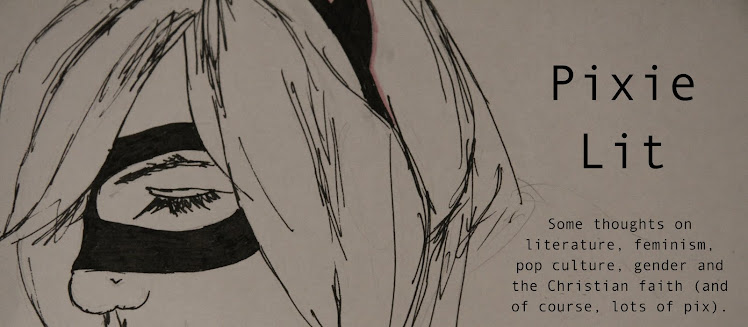In my last post, I said that Lester Ballard, murderous antagonist of Cormac McCarthy’s 1973 novel Child of God, “represented the true nature of the cowboy. McCarthy is critiquing the heroic tradition of the South/Western male: this man is alone, is a destroyer, cannot reproduce sexually for he is attracted only to the dead, with no desire to relate to the living except through violence.”
While I think this still holds, I neglected to explain that McCarthy seems to actually be making a broader comment on the utter degradation of humanity as a whole. Which probably seemed obvious to anyone who read my summary of the novel’s plotline. However! For the sake of self-indulgence I’m going to tell you about the interesting connection formed in my brain last Sunday at church listening to sermon on the sixth commandment, “you shall not murder” (Exod 20:13). Basically, the sermon linked the commandment to Matthew 5:21-22, where Jesus explains that anyone who has hated or been angry with another person is essentially guilty of murder, in the sense that God looks at our hearts and motivations, not just our actions. Obviously, we’re not all actually murderers but the point is that “normal” people have in them the emotional seeds that drive some people to murder, and we should be working on how we treat people in our thoughts and seeking to care for people, not inwardly resent or hate them etc.
Anyway: I think Child of God (as suggested by its not-so-subtle title) actually reflects the inner workings of the “normal” person’s heart and mind through the character of a murderer. Lester Ballard is the literal representation of what Matt 5 is talking about. Ballard is even described as a “child of God much like yourself perhaps" (McCarthy, 4) – he is the everyman (or woman), and while not everyone shoots people and sleeps with the corpses, the novel suggests they are capable of using and abusing other people to similar extent (like the medical students I mentioned in my previous post).
In summary I find Child of God a very powerful and accurate illustration of the biblical idea of sin – while sin manifests in different ways through different people, it can often looks very similar internally. The parallel between Bible and novel is not complete in this case, though, as what Child of God doesn’t do is explore ideas of hope, redemption or forgiveness as much as it does degradation. McCarthy does address these issues in other novels like The Road, I think, but I will discuss this at a later date. (Thankfully the conclusion to the sermon was way more uplifting than that of McCarthy’s novel and focussed on God’s mercy, forgiveness and hope and was actually a huge encouragement to treat people better, rather than revealing humanity’s hopelessness as absolute. Not that I think McCarthy actually does see the hopelessness he depicts as absolute, but that comes through in novels other than Child of God). I think this post pretty much repeated the last, but isn’t biblical and fictional intertextuality totally fascinating, particular when it’s unclear what the fictional author actually thinks of God? Okay bye!

No comments:
Post a Comment